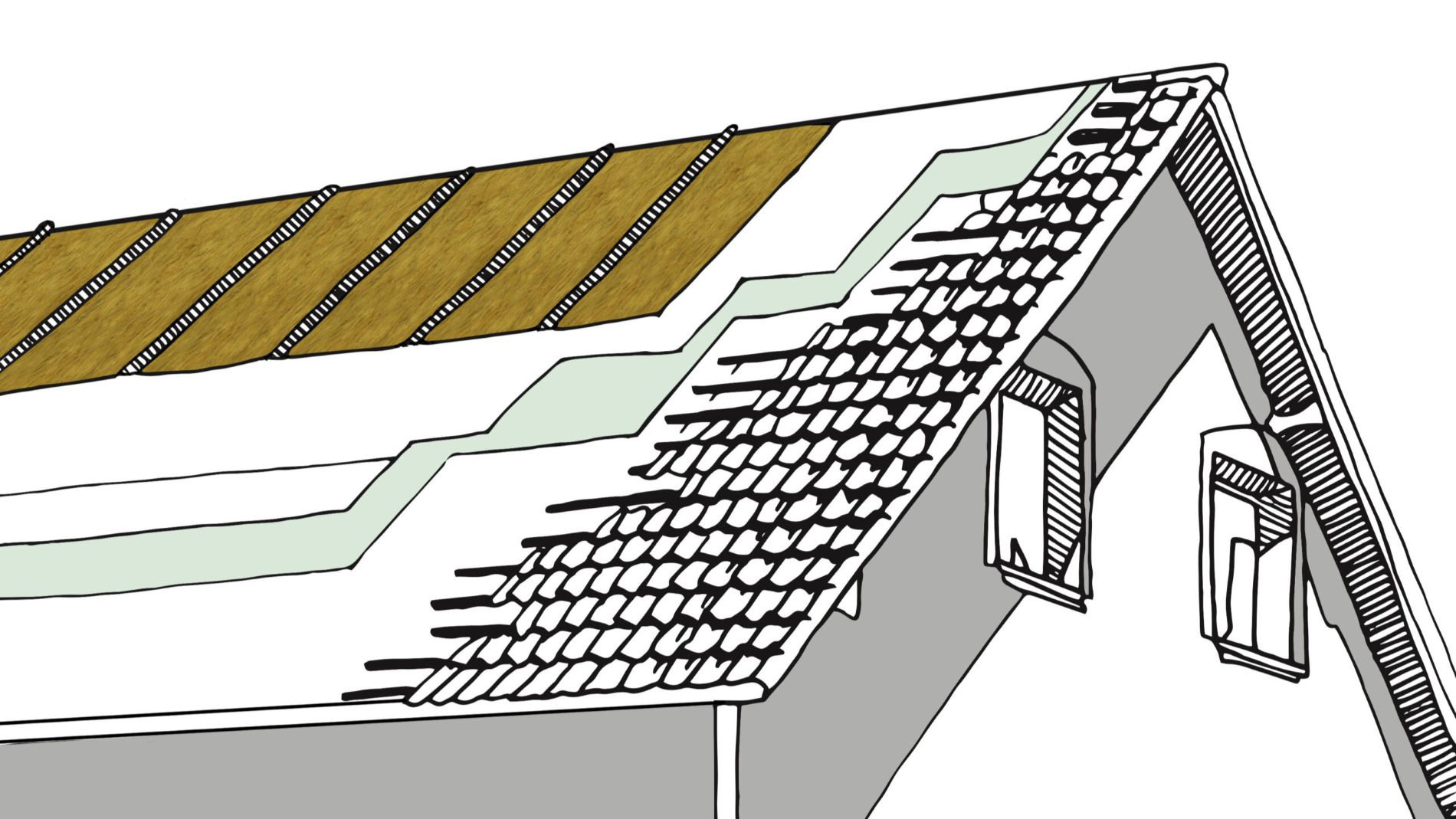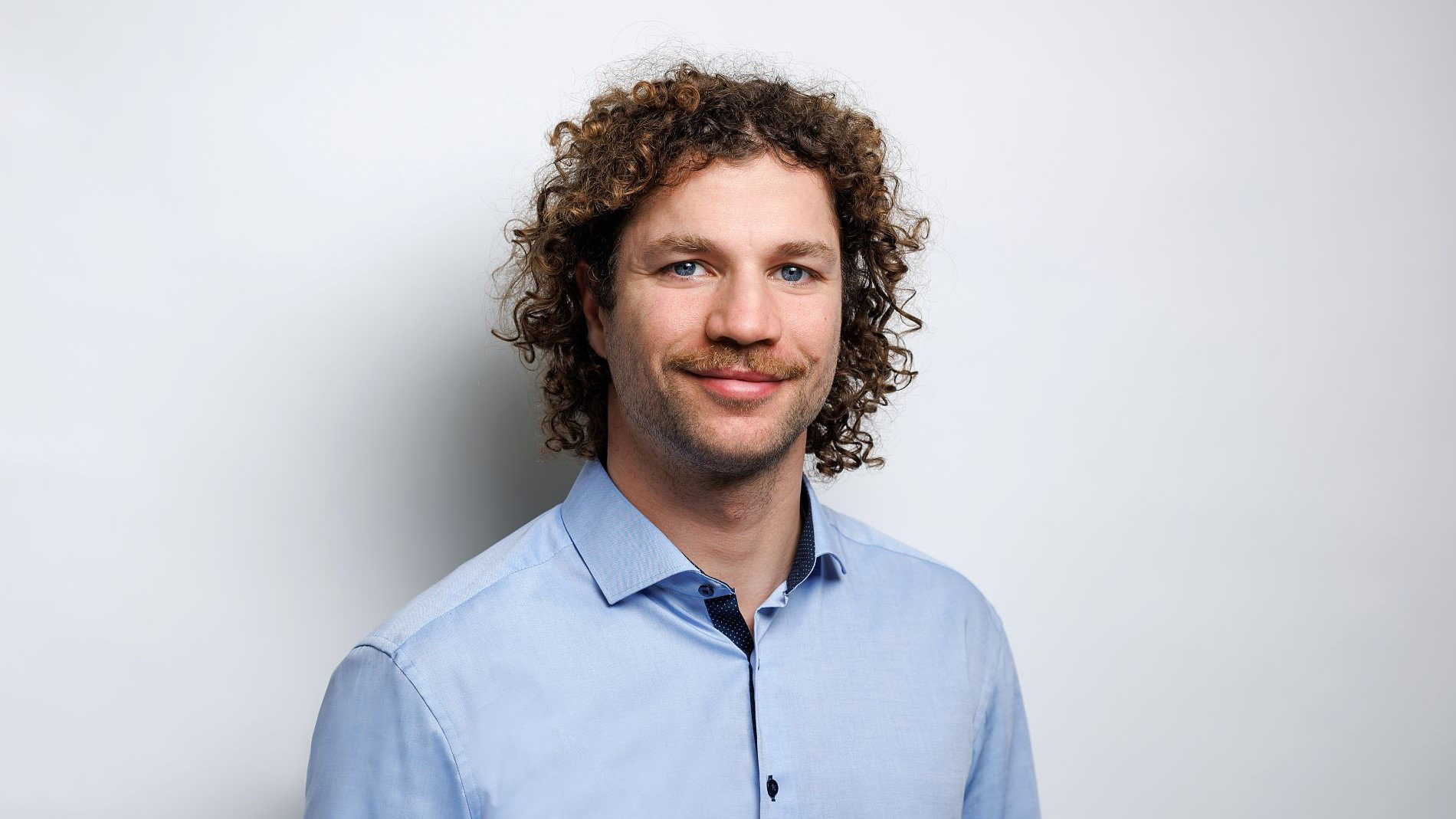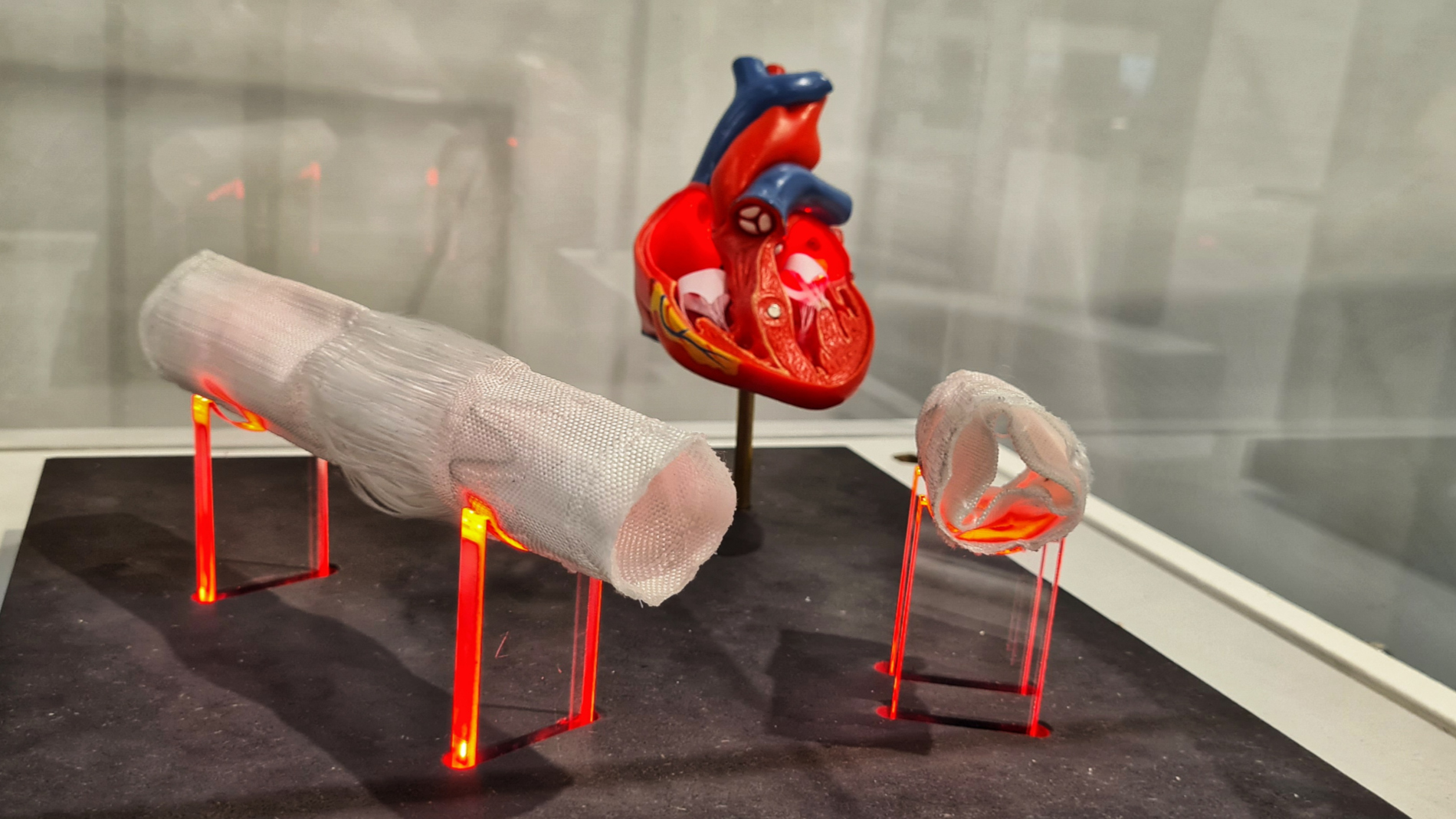Reading time: 8 minutes
In future, this technology will not only flexibly adjust heat transfer through façades, but also serve to control the thermal activation of storage masses. Three research institutes have been working on the project since 2022, which is funded as part of the IGF programme (Industrial Collective Research). A first technology demonstrator is now about to enter the test phase. Jonina Felbinger from the German Aerospace Centre (DLR) and Leon Pauly from the German Institutes for Textile and Fibre Research (DITF) explain exactly what ReVaD is all about.
You are working on ReVaD, a comprehensive research project on adaptive insulation elements. Before we get into the technology, can you tell us which players are collaborating here and what expertise they each bring to the table?
Jonina Felbinger: In the ReVaD project, three research institutions are jointly involved in the development and testing of adaptive insulation elements, accompanied by an industrial advisory board comprising around 20 companies. The collaborating research institutions are DLR, DITF, and the Institute for Building Energetics, Thermotechnology and Energy Storage (IGTE) at the University of Stuttgart.
I work as a research assistant at the DLR Institute of Engineering Thermodynamics. My work focuses on the application of reversible gas–solid reactions in thermal process engineering and on the development of high-performance, efficient reactors that enable the technical use of reactive materials and are precisely tailored to the respective application and specific requirements.
Within the context of the ReVaD project, I apply such reaction systems to specifically control the gas pressure in insulation panels — the gas pressure acts as a control mechanism for the adaptive insulation.
Leon Pauly: I work at the German Institutes for Textile and Fibre Research Denkendorf (DITF), Europe's largest non-university textile research centre. We conduct application-oriented research from the fibre to the textile product. Our task in the project is to develop a suitable textile filling core for the adjustable insulation elements that is optimally matched to the working range of the gas pressure control system developed by DLR.
Jonina Felbinger: At the University of Stuttgart, the technology is being transferred to the field of building services engineering by the third project participant, IGTE. Specifically, the thermal and energetic performance of the adaptive insulation elements in buildings is being simulated, and their impact on energy demand is being quantified. One focus is the development of a model-predictive operating strategy: detailed building models and forecasts of weather and user behavior are used to determine how the insulation elements can be operated optimally to control energy flows within the building and minimize total energy consumption. In addition, IGTE has building-scale laboratory infrastructure where practical tests and technology demonstrations are conducted. This allows to examine how the adaptive elements can be integrated into real building operations and what concrete savings potential can be achieved in terms of heating and cooling energy.
The project can be understood as application-oriented basic research for the construction industry: it involves the development of controllable insulation elements for the demand-oriented adjustment of heat transfer in building envelopes and structures, as well as the thermal activation of storage masses. That sounds complicated. Let's take a step-by-step look at what this involves.
Leon Pauly: Essentially, we are looking for a way to dynamically adjust heat transfer in insulation materials. In traditional building envelopes, thermal resistance is a material property and therefore cannot be changed; depending on the material chosen, they are either highly insulating or not. We want to design a building envelope, a façade, that adapts to changing thermal conditions – for example, protecting interior spaces from the heat of summer during the day and then dissipating the heat accumulated in the room during the day to the outside at night. This generates a passive cooling effect and significantly reduces the energy required for cooling. Consider a typical office building: during the day, a lot of heat is released into the room – by people, equipment, lighting, servers, etc. In many new buildings, there is hardly any way to get rid of this heat except through active, energy-intensive air conditioning. This is exactly where our technology comes in, enabling energy savings in building operation.
Jonina Felbinger: We wear multiple layers of clothing in an “onion” principle to respond flexibly to weather and temperature changes — in a similar way, one can imagine a controllable insulation system, but without the need to put on or take off layers. In our system, the gas pressure adjustment within the insulation element performs this function and determines the varying insulating effect.
Beyond the adaptive façade, the second central application is controlling the heat transfer in the thermal activation of building masses such as walls or ceilings. This allows electrical energy to be stored as heat, for example, when there is surplus energy in the grid due to strong wind or solar generation. The energy is stored in the building mass and released in a controlled manner as heat into the room. The controllable insulation acts like a radiator thermostat: during the charging phase, heat is directed into the storage mass with high insulation relative to the room (OFF state), while when heating is required, heat is released into the room with thermally conductive insulation (ON state). This enables room heating to be supplied on demand, reduces peak loads in the grid, and improves the integration of renewable energy. In existing buildings, this approach has great potential, as existing structures can potentially be used without extensive construction work, allowing retrofittable electrification of space heating.
The building sector offers significant application potential, as in Germany around 35% of total final energy consumption is caused by buildings, more than two-thirds of which is for space heating and domestic hot water. Approximately 80% of this demand is still covered by fossil fuels, resulting in a correspondingly high contribution to greenhouse gas emissions. Our technology provides two central levers for energy savings and system flexibility: on the one hand, adaptive façades can reduce cooling demand — particularly in non-residential buildings such as office complexes — through targeted control of heat flows. On the other hand, the thermal activation of structural masses allows buildings to function as flexible actors within the energy system.
You already mentioned that your adaptive insulation element is controlled by a thermochemical reaction. What does that mean?
Jonina Felbinger: Before we discuss the thermochemical reaction, I would first like to briefly describe the operating principle of our insulation element. The core principle of the technology is based on the so-called Knudsen effect: the thermal conductivity of a porous material strongly depends on the prevailing gas pressure inside. Simply put, the higher the pressure in the panel, the more molecules move within the pores, and the more intense the heat transfer. When the pressure decreases, thermal conductivity correspondingly drops. By precisely controlling the gas pressure, it is therefore possible to regulate exactly how much heat is transported through the insulation element.
Our controllable insulation element consists of two key components: a panel with an enveloped textile, porous core, and a component for regulating the gas pressure within this panel. This is where thermochemistry comes into play: a reactor serves as the control unit for the gas pressure, enabling the reversible metal hydride–hydrogen reaction to be regulated. The reaction material inside the reactor is selectively heated or cooled, causing hydrogen to be absorbed or released into the insulation panel. In this way, the gas pressure inside the panel can be precisely adjusted, and the thermal conductivity can be flexibly controlled via the Knudsen effect. The overall system of the controllable insulation is closed, and the gas pressure is always below ambient pressure. As a result, no hydrogen is consumed, and only a small amount is required.
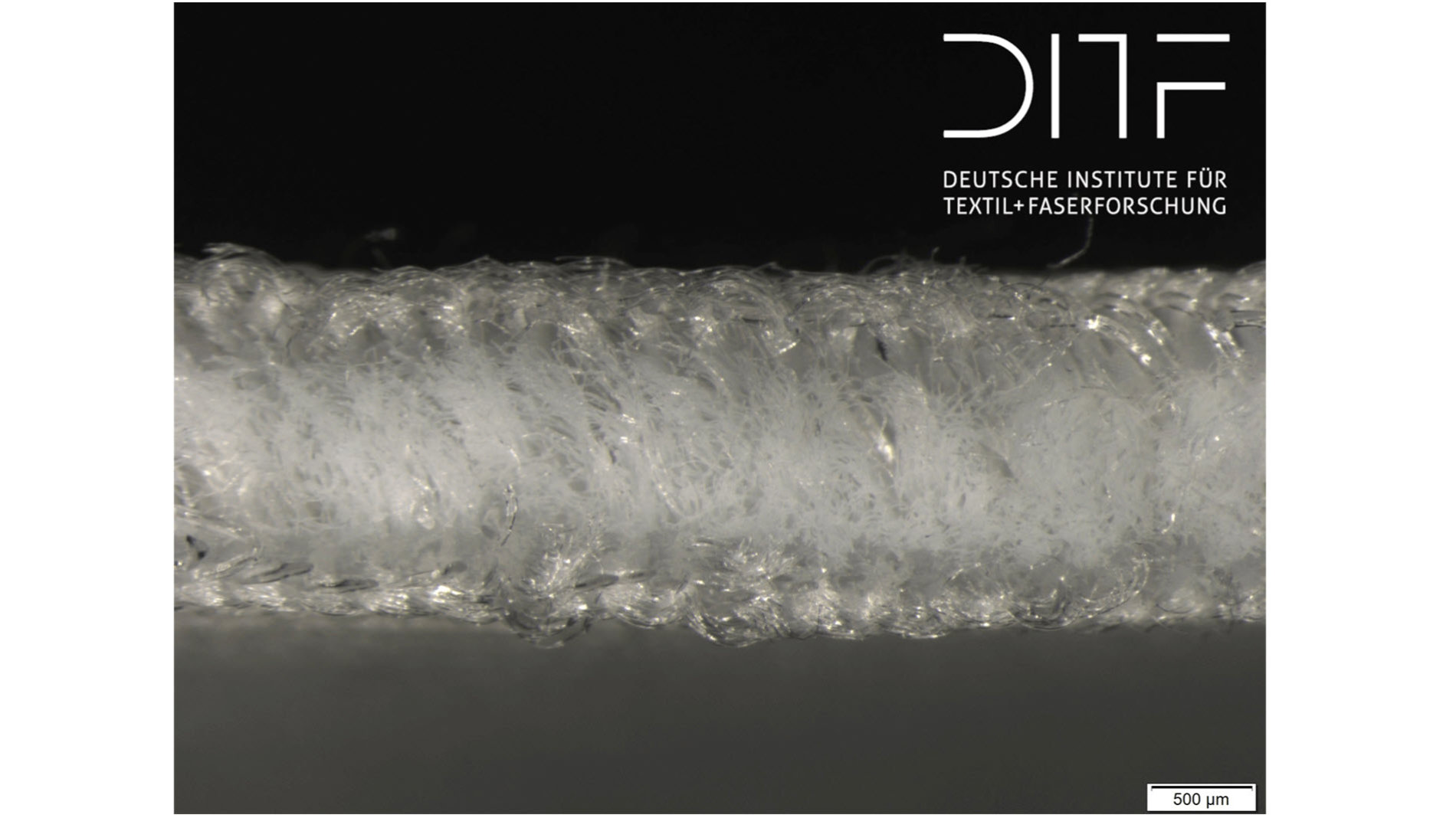
Leon Pauly: The challenge is to develop a suitable open-pored material for the insulation panel that has the right pore size for the pressure range of the thermochemical reaction, so that we can vary the heat flow efficiently. In conventional insulation materials, the pores are usually very fine or closed – unsuitable for our purposes. We need defined, open pores through which the gas can enter and exit in a controlled manner. At the same time, the material must remain dimensionally stable when switching between vacuum and pressurisation. This places high demands on material development. To this end, we have developed special textile spacer knits made of polyester yarns that can withstand the force of the vacuum and ensure a consistent open pore structure. We combine different types of yarn and use this, together with the machine parameters on the circular knitting machine, to adjust the pore sizes. We are talking here about pore sizes between 0.1 and 0.01 millimetres.
Overall, our spacer fabric is made up of three layers. Between two cover surfaces, the so-called pile threads run perpendicular to them as supports. In the pile thread space that is formed here, we can adjust the pore size by introducing textured yarns. Choosing the right yarns ensures that the structure remains open-pored and mechanically stable, even when subjected to the high forces generated by the vacuum in the panel. A single layer of spacer fabric is approximately two millimetres thick. The layers are then stacked and sealed in a gas-tight plastic film with metal lamination. Our finished insulation panel should ultimately be about three centimetres thick. To achieve this, we lay several layers of spacer fabric on top of each other. The aim is to find an optimal pore structure that can also be transferred to other fibre materials in the future.
Jonina Felbinger: A major advantage of our approach is that the two core components are separated by a valve. This means that energy is only required at the reactor when the gas pressure — and thus the insulation performance — needs to be changed. Extended holding periods in a certain state occur passively, without any power consumption.
The practical test phase with a technology demonstrator will start in autumn. What are the next steps? Is a market launch already foreseeable?
Jonina Felbinger: That’s right — starting this autumn, we will begin practical tests of the insulation system in the IGTE laboratories under building-relevant boundary conditions. Prior to this, laboratory tests were already conducted at DLR to determine the interaction of the core components, using 30 × 30 cm panels from DITF in coupling with our reactors. For the demonstration at IGTE, the system is now being scaled up to 1 × 1 m.
The two central application cases are being tested: on the one hand, the controllable insulation as an adaptive building envelope, and on the other, the thermal activation of building components with the support of the controllable panel. For this purpose, a representative miniature room with variably adjustable interior and exterior conditions is being simulated. In these tests, we aim not only to determine the range over which heat transfer can be controlled, but also, for example, how quickly the system responds, how efficiently heat can be introduced into and released from the building mass, and what energetic benefits the adaptive insulation system provides in practical operation.
The experiments serve not only for practical demonstration but also as a data basis for parallel simulation studies at IGTE. These analyses help us evaluate the potential of the technology, quantify the effects of the controllable insulation on the energy balance of buildings, and identify possible operational limits and optimization opportunities.
Leon Pauly: The developments are currently at a technology maturity level of around 4 to 5. Market launch is not our immediate goal in this project; as research institutes, we are focusing on technological development and proving functionality. However, we are in contact with industry partners and are, of course, also working towards finding practical applications for the technology. This could involve a company from the construction industry or building services engineering sector that is able and willing to further develop the technology into a market-ready product.
Would it also be conceivable to use the insulation panels in existing buildings?
Jonina Felbinger: That’s an exciting question. What will actually be decisive is whether and how such systems can be retrofitted, and to what extent existing building components in older buildings can be thermally activated. The key questions are therefore: how much heat can realistically be stored in these building structures? How can this heat storage and release be precisely controlled in existing buildings, and how can our technology be practically integrated with already existing structures and systems? If the current tests prove promising, the next exciting step in development for us will be: out of the lab and into real (test) buildings.
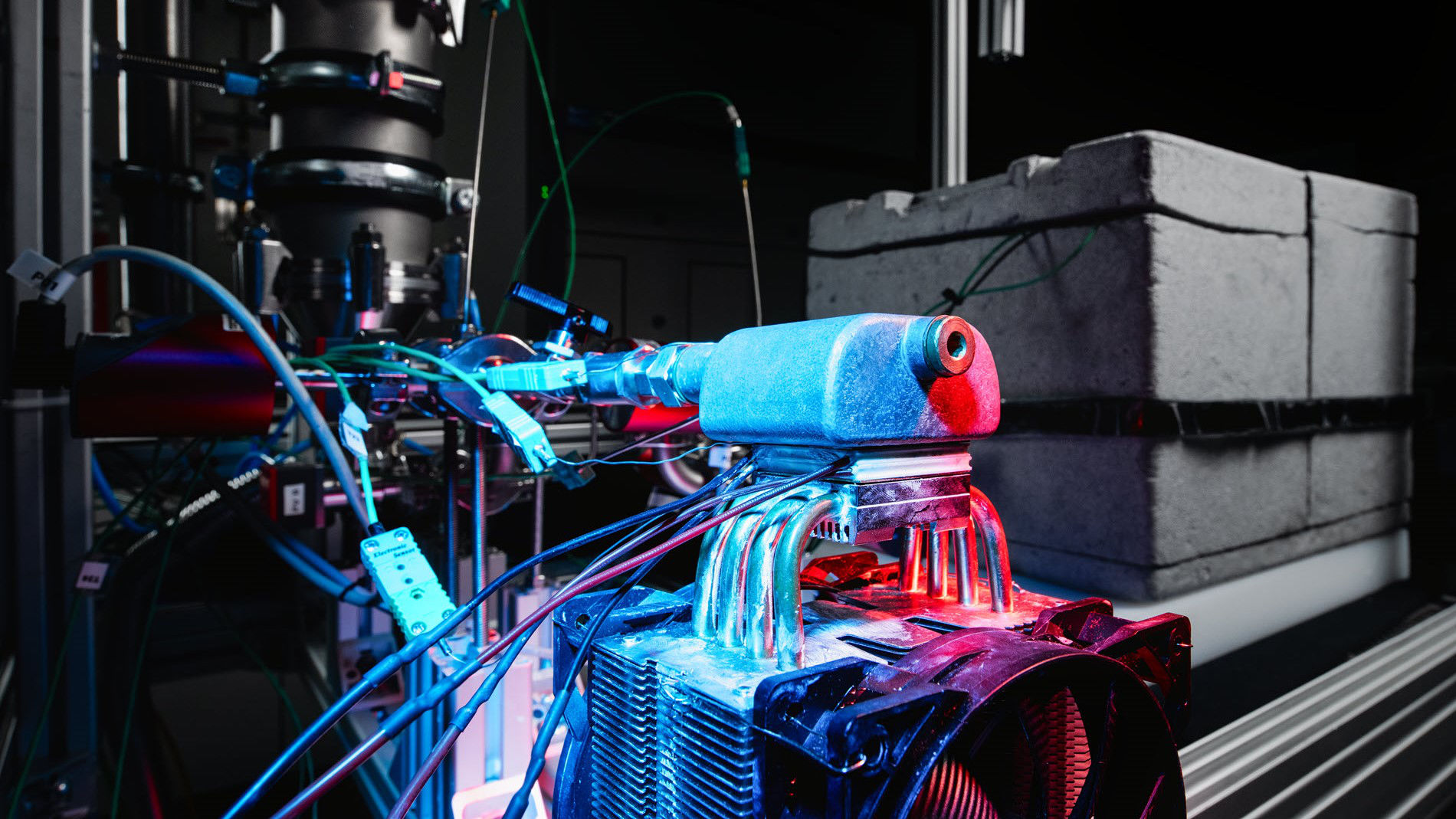
Cover photo: FMI Fachverband Mineralwolleindustrie e.V.
